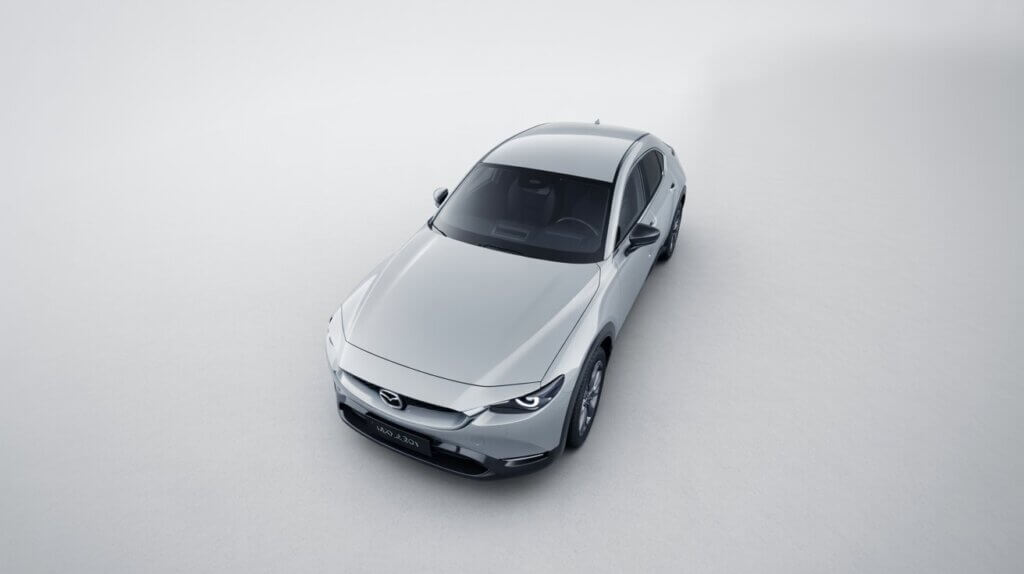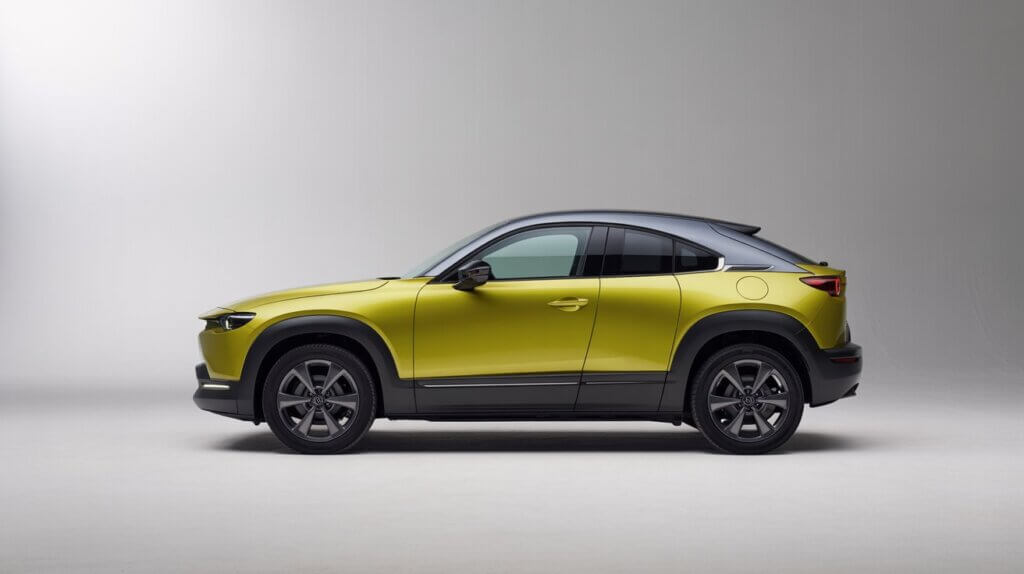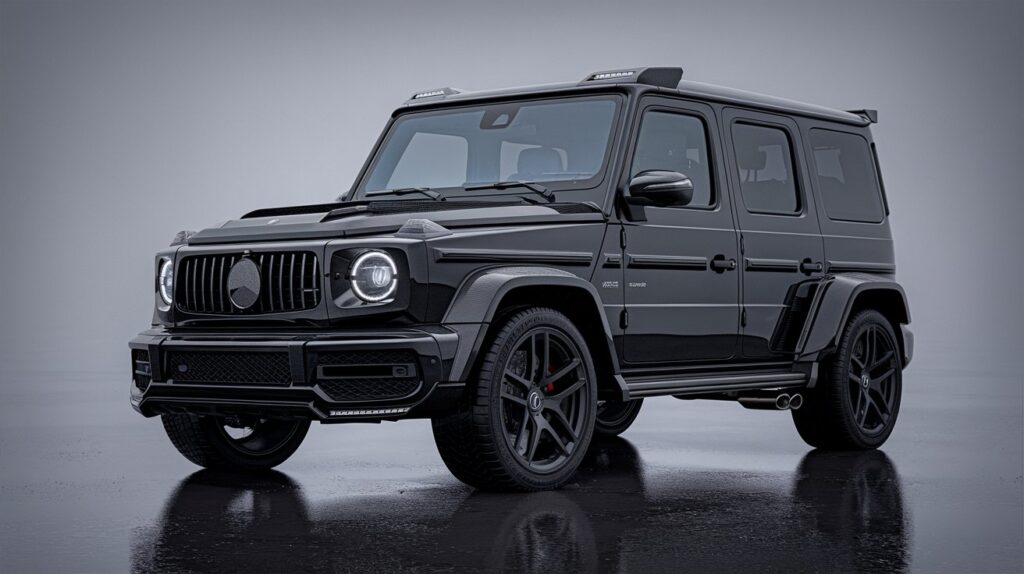Introduction: A Fresh Take or a Familiar Face?
Mazda has always been a brand that punches above its weight, delivering engaging drive dynamics wrapped in elegant design. As automakers rush to electrify their lineups, the 2025 Mazda MX-30 EV enters the arena not as a performance powerhouse, but as a thoughtful, urban-centric electric crossover. That said, this isn’t Mazda’s first swing at the EV market. After a lukewarm reception in the U.S. to earlier MX-30 versions, Mazda seems intent on refining the concept rather than reinventing it.
Yet, there’s a catch. As of May 2025, Mazda has not confirmed a new U.S. release for the MX-30 EV. Mazda USA and sources like Car and Driver continue to list the 2023 model as the most recent American iteration, sold exclusively in California. However, international markets—particularly Europe and Japan—continue to receive updated versions. So while this deep dive draws on global specs, it holds value for eco-conscious buyers in markets where the MX-30 EV is still active or making a return.
Powertrain and Performance: What’s Under the Hood?
The 2025 MX-30 EV retains a front-mounted electric motor generating 143 horsepower and 200 Nm (147 lb-ft) of torque, paired with a single-speed automatic transmission and front-wheel drive. It’s a modest configuration, aimed not at adrenaline junkies but at urban drivers prioritizing efficiency and ease of use.
- Top Speed: 140 km/h (87 mph)
- 0–100 km/h: Approximately 9.7 seconds
- Drivetrain: Front-wheel drive (FWD)
Compared to competitors in the compact EV space, such as the Hyundai Kona Electric or the Volvo EX30, the MX-30 falls short on acceleration and top-end performance. The Kona, for instance, delivers 201 horsepower and gets from 0–100 km/h in just 7.8 seconds. While Mazda’s approach aligns with daily usability, buyers expecting thrilling performance will likely feel underwhelmed.

However, it’s worth noting that the powertrain’s linear torque delivery and one-pedal driving mode make for a smooth and pleasant urban driving experience—ideal for navigating tight city streets or stop-and-go traffic. For readers interested in how the MX-30’s electric setup compares with Mazda’s traditional sporty models, check out our detailed review of the 2025 Mazda 3 for insights into its performance and handling.
Range and Charging: A Persistent Limitation
Mazda continues to equip the MX-30 with a 35.5 kWh battery pack, delivering a WLTP-rated range of 200 km (124 miles). Under EPA estimates, this figure drops to just about 100 miles—a significant limitation in a segment where 250+ miles is rapidly becoming the standard.
- Battery Capacity: 35.5 kWh
- WLTP Range: 200 km (124 miles)
- EPA Range: ~100 miles
- DC Fast Charging: ~36 minutes (20% to 80%)
- AC Level 2 Charging: ~4.5 hours
Mazda frames this low range as an intentional design decision, focusing the MX-30 on urban usage and shorter commutes. While this makes sense for European cities with dense charging infrastructure, it poses a challenge in North America where distances are longer and public chargers less prevalent.
Shoppers considering alternatives like the Chevrolet Bolt EUV or Kia Niro EV—both offering more than 250 miles of range—may see the MX-30’s limited range as a critical flaw.
Weight, Ride, and Handling: Mazda’s Signature Balance
Weighing approximately 1,645 kg (3,626 lbs), the MX-30 is light for an EV, which helps with handling and efficiency. Mazda engineers have fine-tuned the suspension for comfort, and the battery placement lowers the center of gravity, giving the car a planted feel around corners.
Even without all-wheel drive, the chassis balance and responsive steering make the MX-30 enjoyable to drive at urban and suburban speeds. But spirited driving reveals its limitations. Those craving more dynamic feedback may want to explore Mazda’s combustion-powered options, as discussed in this overview of the 2025 Mazda 3.
Interior Tech and Cabin Quality: Mazda’s Strong Suit
One area where the MX-30 punches above its weight is the interior. Mazda continues to impress with minimalist aesthetics, sustainable materials, and intuitive layout. While it doesn’t boast massive screens or flashy gimmicks, the design feels cohesive and user-focused.
Infotainment and Features
- Infotainment Screen: 8.8-inch non-touch display
- Instrument Cluster: 7-inch digital display
- HVAC Controls: 7-inch secondary touchscreen for climate
- Connectivity: Apple CarPlay, Android Auto, Bluetooth, USB-C
Mazda’s commitment to using a rotary dial instead of a touchscreen may seem dated to some, but it minimizes distraction while driving. The cork-lined center console—made from recycled wine bottle stoppers—and eco-fabric seats reinforce the brand’s eco-conscious values without feeling cheap.
Comfort is excellent in the front seats, and the cabin remains quiet even at highway speeds, thanks to solid sound insulation and quality materials. However, rear seat space is tight, and taller passengers may feel cramped, especially during longer drives.
Trim Levels and Customization Options
The 2025 MX-30 EV is offered internationally in multiple trims, with varying degrees of luxury and tech:
- Prime Line: Entry-level trim with cloth upholstery and basic infotainment
- Exclusive Line: Adds 18-inch alloys, upgraded cabin accents
- Makoto: Top-spec version with heated steering wheel, Bose audio, sunroof, and leatherette seating
Mazda has ensured that even base trims include essential safety features like adaptive cruise control, lane-keep assist, and blind-spot monitoring. Premium trims elevate the comfort without straying into unnecessary opulence, keeping the MX-30 grounded in practicality.
Cargo and Space: Stylish, But Compromised
The MX-30’s exterior design leans heavily on style, with a sloped roofline and suicide-style rear doors. While visually distinctive, these “freestyle” doors hinder rear seat access and limit the vehicle’s practicality.
- Cargo Volume (Seats Up): 366 liters (12.9 cu ft)
- Seats Folded: Approx. 1,155 liters (40.8 cu ft)
In everyday use, this means the MX-30 is well-suited for grocery runs, weekend gear, or commuting—but not ideal for long road trips or families needing ample cargo space. In contrast, competitors like the Kia Niro EV offer larger rear openings and more functional cargo layouts.

Safety and Driver Assistance
Mazda’s i-Activsense suite ensures the MX-30 doesn’t skimp on safety. All trims come standard with:
- Forward Collision Mitigation (Smart Brake Support)
- Lane Departure Warning and Lane Keep Assist
- Blind Spot Monitoring
- Rear Cross-Traffic Alert
- Driver Attention Monitoring
Euro NCAP awarded the MX-30 a 5-star safety rating, thanks to its strong structural integrity and reliable ADAS systems. While not as advanced as Tesla’s Autopilot or Ford’s BlueCruise, Mazda’s safety tech covers the fundamentals very well.
Pricing and Value: Who’s It For?
The MX-30 starts around €38,000 in Europe, translating to roughly $34,000 USD. With incentives, pricing becomes more competitive, especially for urban dwellers with access to home or public charging. But measured purely by specs and capability, the MX-30 struggles to justify its price.
For about the same money, buyers can find EVs with more range, faster acceleration, and greater practicality. Even Mazda fans might gravitate toward combustion alternatives like the newly revived Mazda 6, which offers a bold mix of power and refinement. We cover its specs and pricing extensively in our 2025 Mazda 6 full review.
Pros and Cons
Pros:
- Premium interior materials and design
- Unique styling with sustainable elements
- Smooth, balanced ride
- Excellent safety features
Cons:
- Severely limited range for its price
- Lacks performance edge
- Cramped rear seat and cargo space
- Unlikely U.S. return in 2025
Conclusion: A City Car with a Conscious Soul
The 2025 Mazda MX-30 EV isn’t trying to be everything to everyone—and that’s both its strength and its weakness. It offers thoughtful design, sustainable materials, and city-friendly driving manners. But its limitations in range and performance can’t be ignored, especially in a rapidly evolving EV landscape where consumers expect more.
This crossover is best suited for urban commuters or second-car households looking for a stylish and environmentally aware runabout. It may not lead the EV revolution, but for a select few, it offers a uniquely Mazda take on electric mobility.
FAQ: 2025 Mazda MX-30 EV
1. Is the 2025 Mazda MX-30 EV available in the U.S.?
As of mid-2025, Mazda has not confirmed a U.S. relaunch for the MX-30 EV. The last version sold in the U.S. was the 2023 model, available only in California.
2. What is the driving range of the MX-30 EV?
The 2025 MX-30 offers a WLTP-estimated range of 200 km (124 miles) and an EPA-estimated range of about 100 miles, making it suitable mainly for short urban commutes.
3. How long does it take to charge the MX-30?
With a DC fast charger, the MX-30 can charge from 20% to 80% in roughly 36 minutes. On a Level 2 AC charger, a full charge takes about 4.5 hours.
4. What kind of battery does the MX-30 use?
It uses a 35.5 kWh lithium-ion battery, designed for lightweight efficiency but limited in range.
5. How does the MX-30 compare to similar EVs like the Kona Electric?
The Hyundai Kona Electric outperforms the MX-30 in nearly every metric—range, power, acceleration, and cargo space—making it a more versatile choice.
6. What safety features are included?
All MX-30 trims include lane keep assist, blind-spot monitoring, adaptive cruise control, and more under Mazda’s i-Activsense suite, contributing to its 5-star Euro NCAP rating.
7. Is the interior of the MX-30 modern?
Yes, though conservative. It features high-quality materials and a clean layout but lacks touchscreen infotainment, which may feel outdated to some users.
8. Can you road trip with the MX-30?
Road tripping is not ideal due to the limited range. The MX-30 is best used for city driving or short-range errands.
9. What makes the MX-30 unique in the EV world?
Its combination of sustainable materials, minimalist design, and freestyle doors create a distinct identity—though not necessarily mass-market appeal.
10. Are there better options in the Mazda lineup for driving enjoyment?
Yes. If you want a more dynamic driving experience, the combustion-engine Mazda 3 and the revived Mazda 6 offer greater performance and practicality. For more details, see our reviews of the 2025 Mazda 3 and 2025 Mazda 6.

